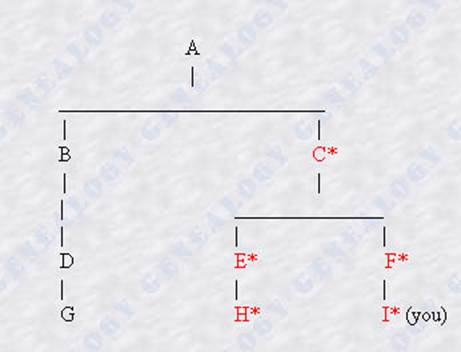THE MUTATIONS
[What do they tell us?]
When we find a MML participant with a marker value
different from John Mangum’s marker values, we know that some ancestor of the
participant, one that lived after John Mangum, had a mutation. Since all the
descendents of this “ancestor with a mutated marker” will have this same
mutation, we can use this fact to help confirm descent from this ancestor. In
other words, if your great-great-great grandfather [Lets call him William]
originated a mutation in marker XYZ, then you and all your male kinfolks who
have a direct male line to William will have his same mutation.[1]
If you find another person with whom there is a question whether he descended
from William or not, you can look at the DNA marker in question. If he has the
mutation, he is probably a descendent of William. If he doesn’t have the
mutation, he probably is not a descendent.[2]
It is a big help if we can determine just which
ancestor originated the mutation described above. Without more DNA tests on
other relatives, you probably will not know if the mutation originated with
your great-great-great grandfather, your great-great grandfather, your great
grandfather, your grandfather, your father, or even in you. If you test your
brother and he has the mutation, then you did not originate the mutation. If
your uncle (or his descendents) has the mutation, then your father did not
originate the mutation. Using these DNA tests for each branch that originates
further back in the lineage, it can eventually tell you where the mutation
originated. See the descent tree below for a very simplified version of the
process:

Note that the mutation in
this descent tree is shown with a star and in red. If your grandfather
originated the mutation, you(I), your father(F), your uncle(E) and your first
cousin(H), as well as your grandfather (C) will have the mutation, although
without DNA tests, you will not initially know this. Your second cousin (G)
will not have it. If you test yourself, and your first cousin or uncle, plus
your second cousin, you can pinpoint the originator of the mutation as your
grandfather (C). If later you find a long lost relative and you are unsure
whether he was a descendent of your grandfather (C) or his brother (B), look at
his DNA. If he has the mutation, he descends from your grandfather. If he
doesn’t, he descends from your grandfather’s brother (B)